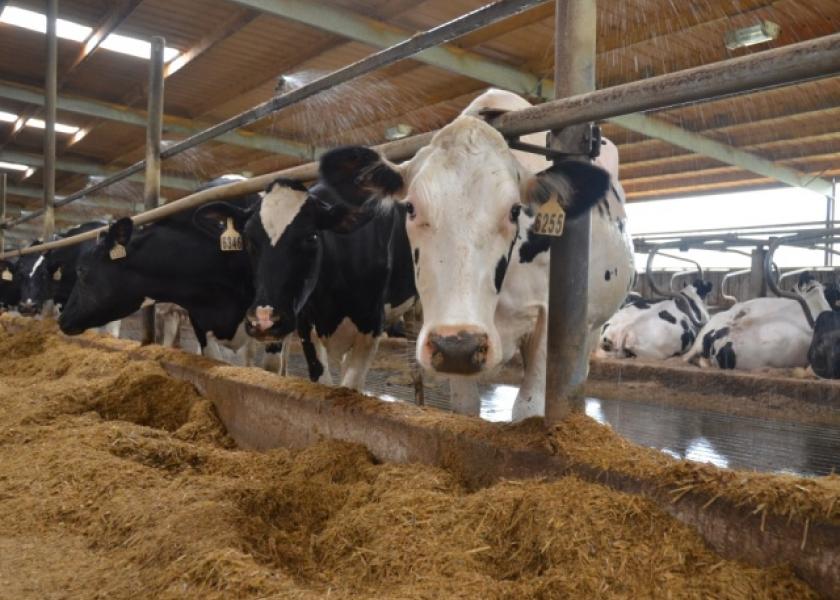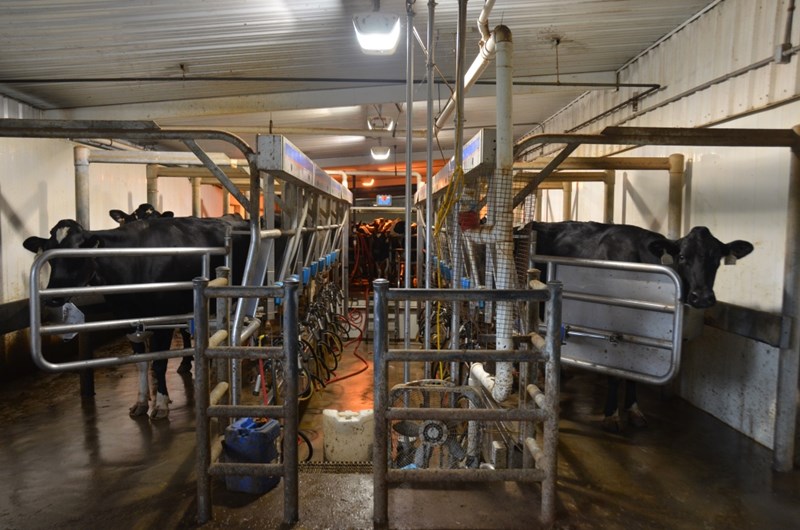Operating Separate Parlors Improves Efficiency for Tennessee Dairy

When John Harrison got his start milking his own cows he did it at two separate farms for several years through a partnership and lease agreement. Eventually he was able to relocate and began a single dairy in 1987 at Sweetwater Valley Farm near Philadelphia, Tenn. Today, Harrison is back to milking cows at separate facilities, and surprisingly it has made the operation more efficient.
Harrison built a new satellite facility in 2012 that was intended to add at least 350 more cows to the operation. Plans changed and the decision was made to eliminate some of the overcrowding that was occurring at the home dairy. The expansion did allow for 250 cows to be added to the farm and Harrison is now milking 1,250 head.
In the old setup Harrison was milking 1,000 cows through a double 12 parlor.
The home farm now milks 850 fresh cows, while the newer farm has 400 tail-end pregnant cows. It is only a few miles to the new facility as the crow flies and less than a 10 minute drive.
A tunnel ventilated free stall barn was built to house cows near the newer double 8 parlor. Translucent sky panels let in lots of light and the ventilation has kept cows cool.
“It is a real simple layout and we’re using it as a pen extension for pregnant cows and the tail-end group where there is really no management over there at all,” Harrison says.
The new parlor operates 24/7 with three shifts and only one person on hand is needed for each milking. “It runs pretty efficiently,” Harrison adds.
Cows are only at the satellite dairy for three to four months, meaning there are approximately three turns of cows coming in and out.
“I think this model is very competitive with the 3,000 cow rotary farms. We can do this for less than $3,000 per cow,” Harrison says. He believes he could get his satellite farm to run 500 cows with just one person on-hand for milking.
The system does require cows to be transported between the farms. Every three or four days a trailer load of cows are hauled between dairies ranging from 10-12 head. All calving is done at the home farm.
“What it allows us to do is use our assets a little more efficiently,” Harrison says of the split farms.
Production has stayed high for the cows milking through the two facilities with rolling herd average near 30,000 lb. per year.
All the feed goes through the home facility after a commodity station update was made. The entire feed center is enclosed under one roof which has help decrease shrink. Each day three loads of feed are hauled to the satellite dairy in a mixer feed truck.
Cows are primarily bedded with sand at both farms. The additional space from the new facility allowed dry cows to be housed for the first time in a compost bedded pack barn at the home farm.
Heifers that are yearling age or younger are developed in a pack barn.
Breeding age heifers are turned out on fescue pastures near the dairy. A feeding alley with lockups and an open sided lean-to-shed provides a nice place to breed and helps prepare the heifers for barn life.
Harrison has thoughts of expanding further and he’s got options to consider should the timing be right.
The main parlor has seen three renovations to get to a double 12. Further expansion of the parlor would make it a double 20 parallel. However, with the success of the satellite farm and the low cost to operate it Harrison believes that might be a more appealing growth route.
“This should’ve been our high-producing cow facility,” Harrison says of his satellite farm. But with most of his infrastructure at the home farm his hands were tied on what he could do.
If he builds another satellite farm Harrison thinks he might turn the home farm into a transition dairy where he’d go from milking 850 head down to 500 cows.









